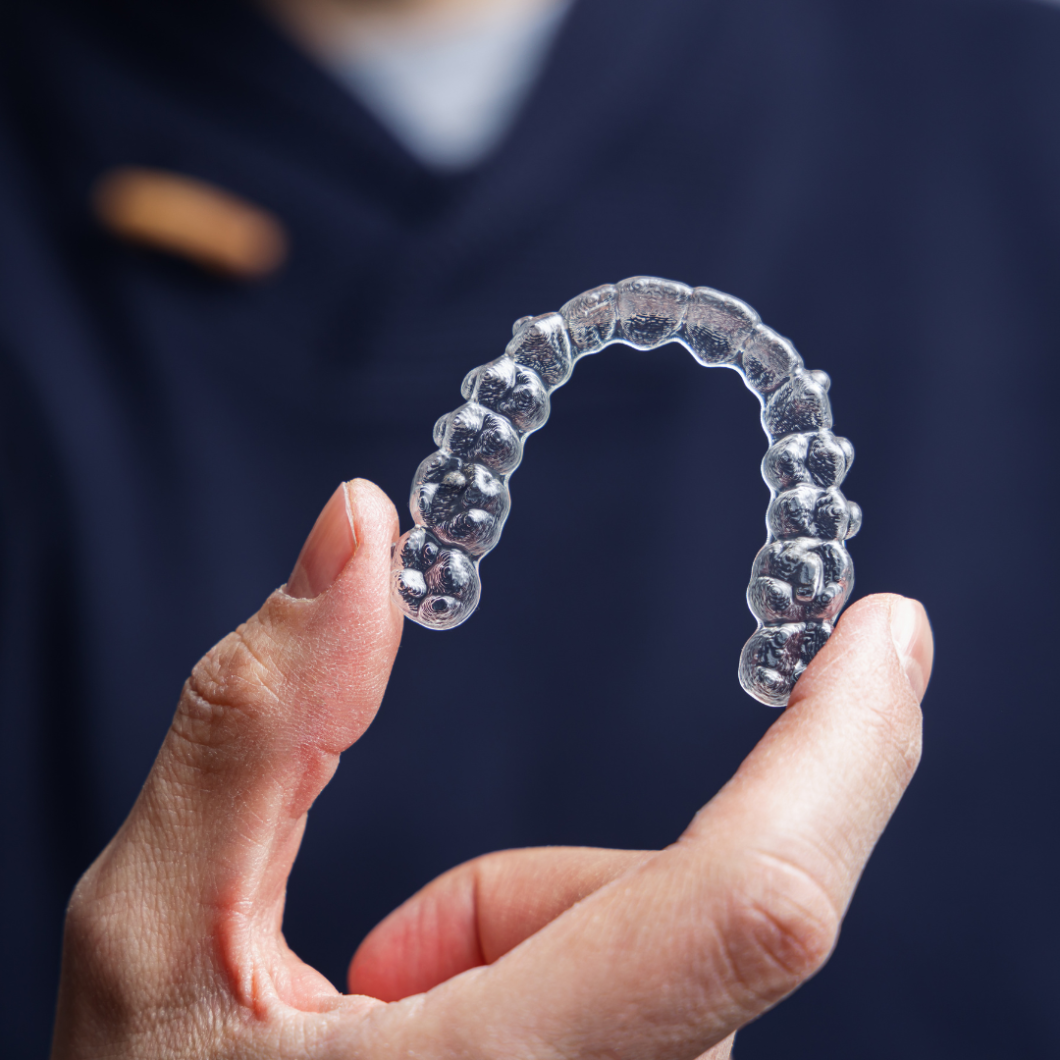If you’re considering orthodontic treatment, you likely have a lot of questions. From costs to lifestyle adjustments, there’s plenty to consider before starting. To help make the decision easier, here are answers to some of the most common questions about Invisalign and orthodontics in general. Whether you’re just curious or ready to get started, our Orthodontics FAQ provides insights can help you feel prepared and excited about your smile journey!
1. Does It Hurt?
One of the most common concerns is discomfort. Orthodontic treatments, including Invisalign, may cause some soreness, especially when starting a new aligner or after an adjustment. The good news? Most discomfort is mild and temporary.
- What to Expect: You may feel tightness or soreness in your teeth for the first few days with each new aligner set. This feeling typically fades as your teeth adjust.
- How to Manage It: Over-the-counter pain relievers, cold compresses, and orthodontic wax (for braces) can help manage any discomfort. Many patients find that switching aligners at night lets them sleep through the initial tightness.
2. How Long Does Treatment Take?
Treatment length varies depending on factors like the complexity of your case, the type of orthodontic option you choose, and your consistency in wearing aligners or maintaining braces.
- Typical Timeline: Invisalign treatments usually range from 6 to 18 months, while traditional braces might take 1 to 3 years.
- Custom Treatment Plan: During your initial consultation, your orthodontist will outline a treatment plan tailored to your needs, providing a realistic timeline based on your unique smile goals.
3. How Much Does It Cost?
Cost is a significant factor for most people, and prices can vary widely based on treatment type, location, and complexity.
- Average Costs: Invisalign treatment generally ranges from $3,000 to $7,000, while braces can range from $2,500 to $6,000. Your orthodontist will be able to give you an exact estimate based on your specific needs.
- Payment Options: Many orthodontic offices offer payment plans to make the cost manageable. Additionally, some dental insurance plans cover a portion of orthodontic treatment, so check with your provider to see what’s included.
4. Can I Still Eat My Favorite Foods?
One of the perks of Invisalign is the freedom to eat what you like since aligners are removable. For those with braces, however, dietary changes are necessary to protect brackets and wires.
- Invisalign Users: You can eat whatever you want, but you’ll need to take out your aligners before eating or drinking anything besides water. This helps avoid staining and keeps your aligners clean.
- Braces Wearers: It’s best to avoid hard, sticky, or chewy foods like popcorn, gum, and caramel, as they can damage braces. With some small adjustments, you’ll still be able to enjoy a variety of delicious foods!
5. How Often Will I Need to Visit the Orthodontist?
Regular check-ins are essential to ensure your treatment stays on track, but the frequency depends on your specific treatment type.
- Invisalign Check-Ins: Most Invisalign patients see their orthodontist every 6-8 weeks for progress check-ups and to pick up new aligners.
- Braces Appointments: For braces, you may need adjustments every 4-6 weeks. These visits allow your orthodontist to tighten wires or replace bands, gradually guiding your teeth into place.
6. Will Wearing Aligners or Braces Affect My Speech?
It’s natural to wonder if orthodontic treatment will impact how you speak. Most people find any changes to their speech are minor and temporary.
- Invisalign Users: You might have a slight lisp when you first start wearing aligners, but it usually goes away within a few days as your mouth adjusts.
- Braces Wearers: Braces typically don’t affect speech, although some patients may feel a little self-conscious at first. Rest assured that any adjustments will feel more natural with time.
7. How Do I Keep My Teeth and Aligners Clean?
Oral hygiene is extra important during orthodontic treatment to keep your smile healthy and your treatment effective.
- For Invisalign: Brush your aligners gently with a soft toothbrush and rinse them every time you take them out. Avoid toothpaste, as it can scratch the aligners. Regularly brush and floss your teeth before reinserting aligners.
- For Braces: Use a soft-bristled toothbrush and floss threaders or interdental brushes to clean around the brackets and wires. Your orthodontist may also recommend special floss or a water flosser for easier cleaning.
8. What Happens After Treatment? Will I Need a Retainer?
Once your teeth are aligned, a retainer is essential to maintain your results. Teeth naturally shift over time, so wearing a retainer will help prevent your teeth from moving back.
- Retainer Types: Retainers come in removable and fixed options, and your orthodontist will recommend one based on your needs.
- Wearing Schedule: In the beginning, you’ll likely need to wear the retainer full-time, transitioning to nighttime wear over time. Regular retainer use is key to keeping your smile straight for the long term.
Ready to Start Your Smile Journey?
Orthodontic treatment is an investment in your confidence, health, and happiness. Whether you choose Invisalign, braces, or another option, understanding the process can make the journey more enjoyable and empowering. If you still have questions, don’t hesitate to reach out to your orthodontist—they’re there to guide you every step of the way!
With these Orthodontics FAQ in mind, you’re one step closer to your best smile. Here’s to a journey filled with confidence, excitement, and the satisfaction of watching your smile transform!

